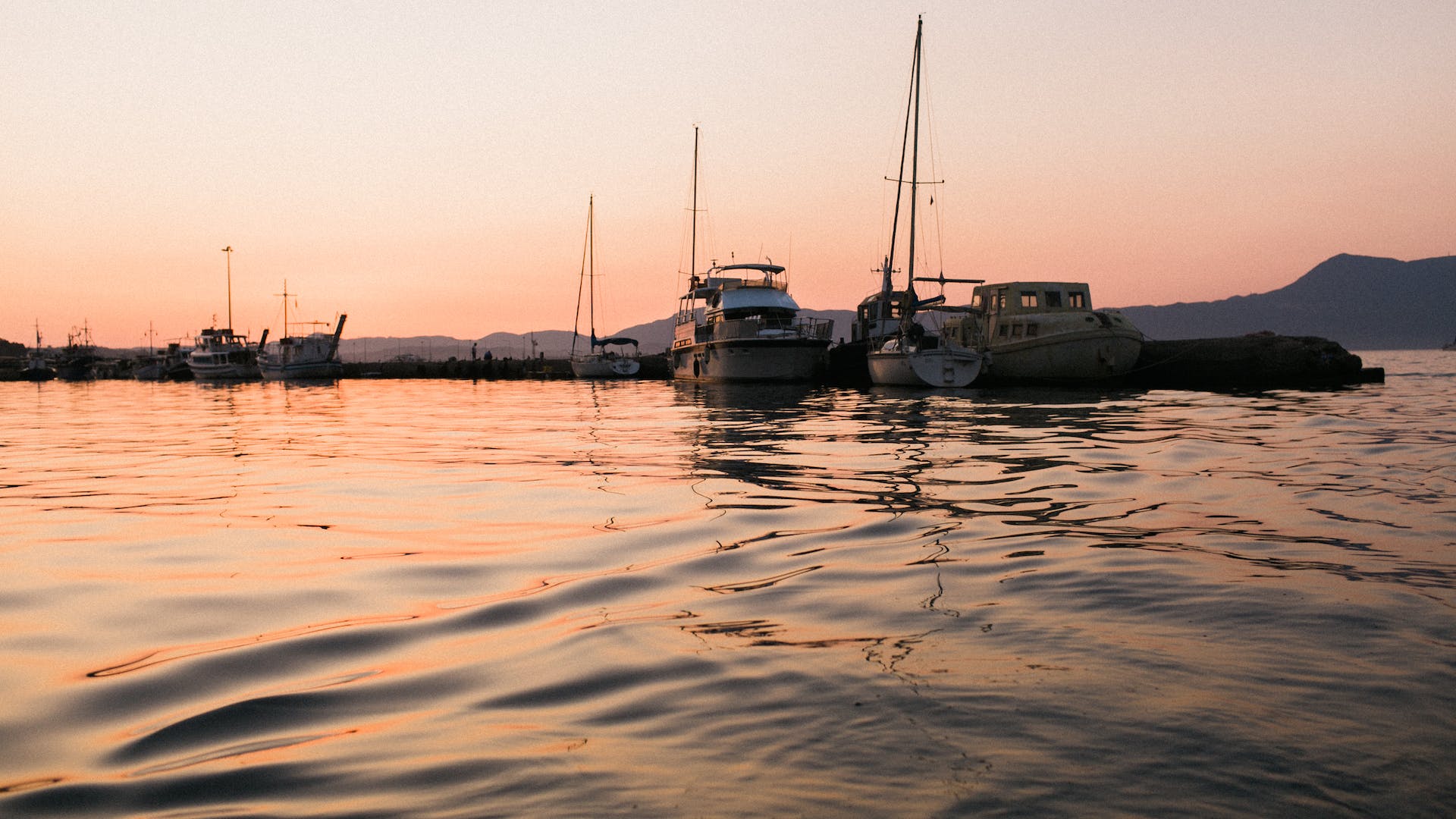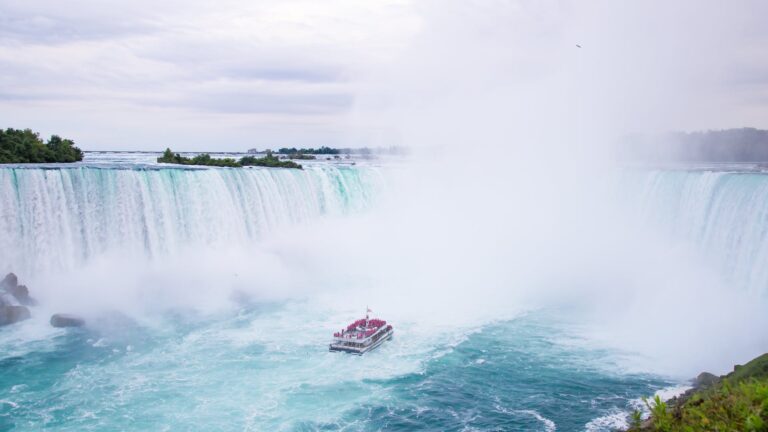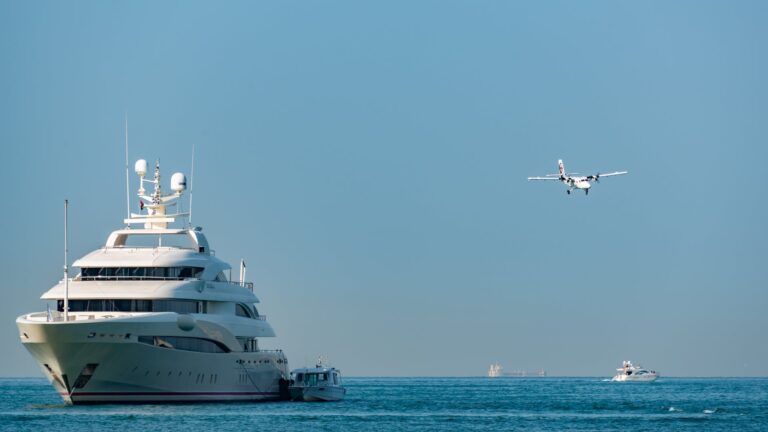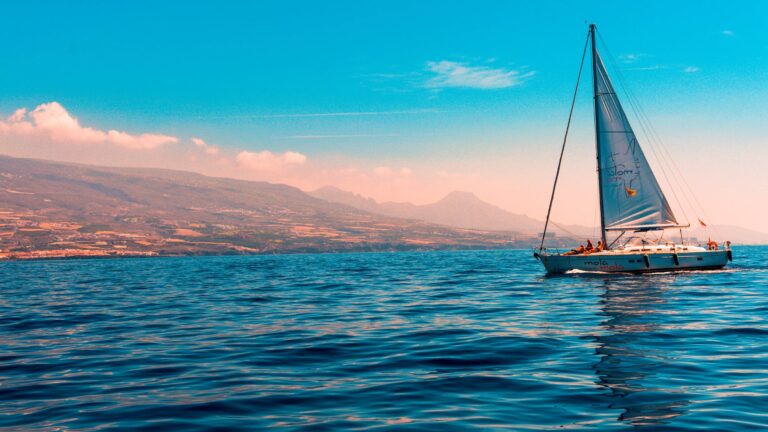What Do Sailors Call It When There Is No Wind?
Sailors have long known about the challenges of sailing through a region where there is no wind, and have come up with their own name for such a situation: “the doldrums.”
The doldrums refer to an area near the equator where surface winds are often light or nonexistent, creating difficulties for navigating vessels with sails as their primary means of propulsion.
In this article, we will explore what sailors call it when there is no wind, why this phenomenon occurs, and different strategies they use to navigate through these conditions successfully.
What Is The Doldrums?
The doldrums are a region around the equator characterized by light winds or no winds at all, which makes them especially difficult for sailing vessels to traverse due to their reliance on wind power for propulsion.
This region can be found between 5°N and 5°S latitudes, also known as the “intertropical convergence zone” (ITCZ).
This region typically experiences lighter trade winds from both sides and gives way to calmer weather systems like high-pressure cells that can cause a lack of wind during certain times of year or day.
Reasons why there is little wind in the Doldrums
The main reason why these areas experience lighter winds or no winds at all is due to a phenomenon known as “thermal equilibrium” which occurs when warm air rises from near the surface of the ocean and cooler air descends from above creating a circulation pattern similar to that of a lava lamp (but without lava).
This thermal equilibrium helps form an area near the equator that has less vertical movement than other areas and therefore experiences less wind as well. Other reasons include seasonal changes and localized weather systems such as storms that can cause an area to experience little or no wind temporarily until conditions change again afterward.
History of Sailing in the Doldrums
Sailing vessels have been traversing these regions since ancient times although they were not always aware of what caused them to become “stuck” in these areas with no wind or very light winds.
In fact, many sailors considered these regions cursed because they could not understand why their ships would become stuck for days on end with very little progress being made against their intended route.
Challenges of Sailing in the Doldrums
One of the main challenges sailors face when traversing these areas with little or no wind is navigating without sails due to their reliance on them for propulsion power as well as steering control (using sail trim).
Without sails, sailors must rely on other methods such as oars, engines, or even tow ropes from other ships if available, however, these methods are all much slower than sailing and can be exhausting for those manning them over long periods of time (especially in hot climates).
Additionally, most sailing vessels are not designed for motoring which further complicates navigation when there is no wind available for them to take advantage of.
Advantages of Sailing in the Doldrums
Despite being difficult to traverse due to lack of wind power, there are some advantages associated with sailing through these regions that have led many sailors to seek out routes that pass through them during certain times throughout history, namely calmer seas and better visibility due to less cloud cover than other parts of open water oceans due to its location close by landmasses like Africa and South America which block out much inclement weather from passing through further out at sea where it would otherwise cause waves and clouds obscuring visibility significantly more than when passing through nearer land masses like those mentioned above which provide some shelter from inclement weather passing through further out at sea while still allowing passage through much calmer waters closer by land masses like Africa and South America providing navigators with better chances at locating stars during night navigation which was essential before modern navigation technology was available on ships, something still used today even though modern GPS technology has significantly reduced its need but still serves as an important backup system if necessary due to its low cost compared with having multiple GPS systems onboard a vessel (in case one fails) or having additional redundant systems necessary because GPS signals can be unreliable over large bodies of water like oceans due their large size causing signal degradation (something also encountered during celestial navigation).
Effects of Sailing in the Doldrums
The effects on sailing vessels when traversing these regions can be significant depending on how long they stay stuck due to lack of available winds, especially if they don’t have any alternative means available such as oars motor power etc.,
Meaning they will remain stationary until conditions change enough allowing passage again, something that can take days sometimes depending on how strong trade winds are blowing nearby which may push them back off course if they don’t get enough forward momentum after leaving doldrum regions while still within reachable distance from current trade winds pushing them off course if not careful when trying leave before getting pushed too far off course by strong trade winds blowing nearby upon departing doldrum regions while still within reachable distance from current trade winds pushing them off course if not careful when trying leave before getting pushed too far off course by strong trade winds blowing nearby upon departing doldrum regions while still within reachable distance from current trade winds pushing them off course if not careful when trying leave before getting pushed too far off course by strong trade winds blowing nearby upon departing doldrum regions while still within reachable distance from current trade winds pushing them off course if not careful when trying leave before getting pushed too far off course by strong trade winds blowing nearby upon departing doldrum regions while still within reachable distance from current trade winds pushing them off course if not careful when trying leave before getting pushed too far off course by strong trade winds blowing nearby upon departing.
And so forth until finally leaving reachable distance away from current prevailing trade winds directionally heading away from original destination intended leaving navigators needing recalculate new route back towards original destination once again finding themselves free enough away from current prevailing directionally heading away from original destination intended leaving navigators needing recalculate new route back towards original destination once again finding themselves free enough away from current prevailing directionally heading away from original destination intended leaving navigators needing recalculate new route back towards original destination once again finding themselves free enough away from current prevailing directionally heading away from original destination intended leaving navigators needing recalculate new route back towards original destination once again finally!
What Do Sailors Call It When There Is No Wind?
When faced with this challenge, sailors refer to it colloquially as “the doldrums,” because they feel listless without any forward movement made possible only with sails fulled by enough wind power, something often lacking in this region between 5°N & 5°S latitudes around equator line often referred too ITCZ (intertropical convergence zone) named so because two opposing monsoons converge around this area creating thermal equilibrium effect responsible primarily causing lighter often none existent surface level atmospheric pressure needed fill sail cloths allowing forward momentum necessary progress vessel’s onward journey requiring alternative means propulsive force such manual labor oar rowing engine power tow ropes another vessel help move along until able take advantage next favorable opportunity presented itself either via stronger local currents shifting back into favorable directional flow needed progress vessel’s onward journey safely efficiently possible!
### Strategies for Navigating When There Is No Wind
When faced with this challenge, sailors must come up with strategies for navigating without relying solely on sails using alternative methods such as oars, engines and even tow ropes if available, however, these methods are all much slower than sailing and can be exhausting for those manning them over long periods time especially hot climates! So here few strategies consider implementing make best use resources available: first try take advantage any currents present help move along either naturally occurring oceanic currents localized ones generated rivers emptying into sea closeby, second make sure vessel properly trimmed sail configuration maximize amount lift generated each sail ensure maximum efficiency movement possible given amount forces acting upon it time, third consider implementing some form tactical motoring along way powering up engine whenever able conserve energy resources minimizing amount manual labor needed progress voyage safely efficiently possible! Finally remember always plan ahead check charts ahead time prepare variety scenarios ensure safe arrival desired location end voyage!
Different Types Of Wind Patterns In The Doldrums
When analyzing different types patterns found throughout ITCZ usually two main ones identified: firstly regional monsoon patterns formed two alternating monsoons converging around ITCZ causing thermal equilibrium effect discussed earlier, secondly localized storms/winds caused more localized currents/weather patterns usually passing through entire area relatively quickly hence importance advance planning preparation prior embarking voyage well aware potential dangers posed going into unknown areas unprepared! Additionally may encounter occasionally what referred “light airs” small gusts breeze coming go providing respite otherwise oppressively calm atmosphere crew aboard ship appreciate greatly giving much needed hope morale boost possible hope favorable gusts may come soon enough break stagnation paralysis otherwise experienced aboard ship!
Conclusion
In conclusion we can see that sailing vessels have been traversing through areas known colloquially “the doldrums” since ancient times although were unaware causes behind becoming stuck listless waters so called cursed experienced firsthand harsh effects stagnancy caused lack sufficient atmospheric pressure fill sails propel forward necessitating alternative means propulsive force either manual labor oar rowing engine power tow ropes another vessel help move along until able take advantage favorable opportunity presented itself via stronger local currents shifting back into favorable directional flow needed progress vessel’s onward journey safely efficiently possible!
While much modern technology GPS navigation reduced need celestial navigation previously relied upon stars night navigation still serves important backup system necessary due low cost having multiple GPS systems onboard vessel case one fails additional redundant systems necessary since GPS signals unreliable over large bodies water like oceans size causing signal degradation something else encountered celestial navigation today used less frequently but remains important tool backup plan should ever needed use despite modern advancements technology onboard ships world today traveling treacherous waters filled many unknowns wise navigator always prepare ahead time various scenarios ensure safe arrival desired location end voyage taking every precautionary measure possible protect crew/vessel alike!







